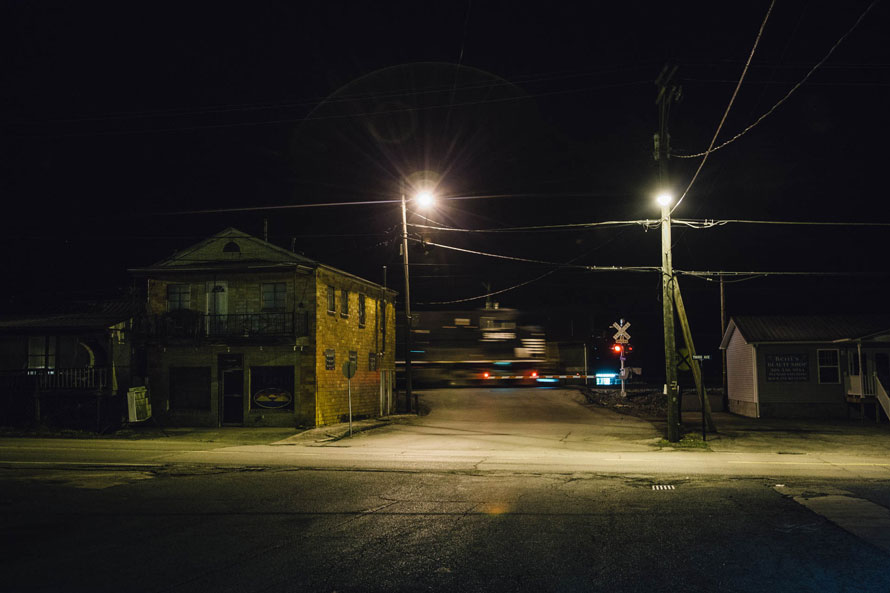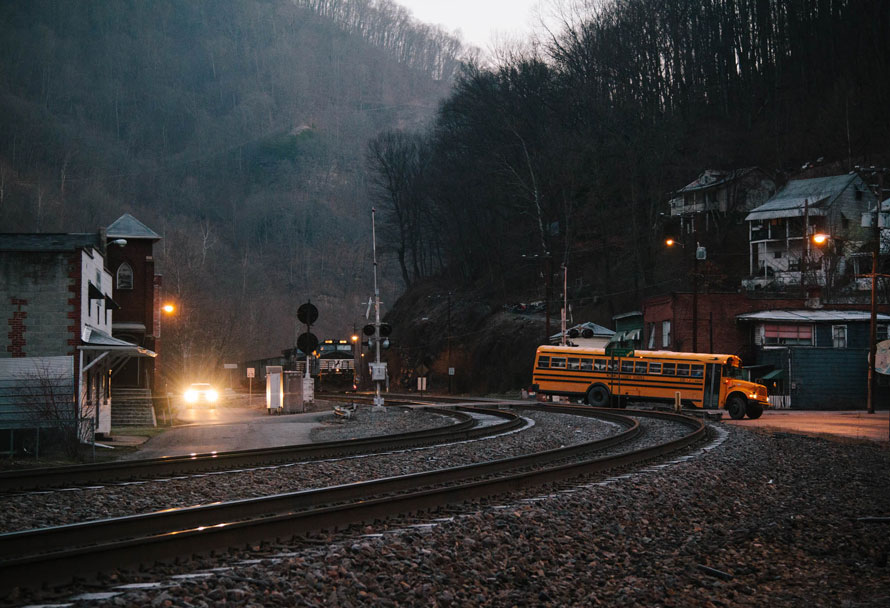The Spirit of Place

Nothing touches my heart like hearing a locomotives horn echoing off in the distance. The softly muted tone that trails as it’s smoothed by the cushion of air between me and the train that may be miles away. That sound is exhilarating as it quiets my soul and sparks memories for my love of trains. As a photographer this is what I live to capture; that feeling, the sounds, and even smells. I want you to inhale my photos and be transported within the crisp straight edges of the photograph. Through some of my photos from West Virginia, you will be able to experience the spirit of place, the spirit of an Appalachia hollow filled with battered 100 year old coal camp homes that nestle along the steel ribbon. To experience photos that have no boundaries is absolutely limitless. You can close your eyes and hear the pounding of a train miles away through the steep mountain sides. That low vibrating hum that grows from a faint whisper into a clash of battling steel squealing up the mountain grade as the locomotives grind past and the smell of diesel fumes fill the air.
To be whisked away to the open rolling plains of Wyoming covered in pastel golden wispy grasses that tickle the air as gentle breezes roll across the long rolling hills. You can see for miles and miles from the plateau of these hills. The distance is far; yet everything feels within reach. A vibration can be felt and as you look hard you see a small thin line slowly moving along the landscape off in the distance. When the sun catches the shiny aluminum hopper cars just right, they reflect a shimming silver light that dances among the prairie grasses. As you follow the road over the rolling hills you notice that the next plateau brings you into sight of a concrete structure dusted in black coal dust that towers towards the sky. This is the Thunder Basin National Grasslands located in the heart of the Powder River Basin coal country.
I use light, shadows and color to shape how it actually felt to be there.
Capturing the spirit of a place isn’t easy. What is the spirit of a place anyways? Is it a feeling? Is it the people? Is it the subject? Or just a town or spot along a set of tracks? Place can be one of many things when it comes to railroads. For photographers like me, place is something we strive to capture, to express to our viewers. It could be a historical location or industrial spur. Maybe it is a passenger station filled with people hurrying to catch a train. I love to capture the essence of a place. I want to show how I feel when I am somewhere; be it the wide open feeling in the Dakotas, the Powder River Basin in Wyoming or the thick woods of Northern Wisconsin. I don’t see railroads as just pieces of equipment on steel tracks; I see them as vital machines that flow within their environments connecting to places beyond eyesight.
I want to capture a setting in a way that allows others from rust belt towns, lively cities and rural outposts to feel like they are standing in that exact spot, seeing it for the first time, or fleeting back to their roots. Some may find that it is easiest to photograph a place that they are very familiar with, a region that they know every crook and cranny of. I personally find home as one of the toughest locations to see and capture the emotion in. I always find myself going to the same locations at the same times. I have become numb to the emotion of home, the mundane and every day routine that I struggle to feel. I love going where I haven’t been, listening to my quiet insights along the way. The sensation is overwhelming when you travel someplace new or somewhere you haven’t visited in years. I want to portray the explosions of nerve endings running throughout the complexities of my body. My senses are capturing my sanity, blending my love of trains, fleeting moments and passion for photography.

There isn’t a systematic formula to capture these portraits and sweeping landscapes. You need to feel the place or environment that you are in. I have to radically change how I photograph different places like the plains of the American west compared to the narrow mountain hollows of the east. Out west I showcase the openness, large skies, and desolation. In the mountains of the east I portray how the communities build tight between the tracks and mountain sides. Even in these railroad photos, rarely is a train the main subject. I put a lot more value on the scene as a whole where the train or train tracks as just a piece of the overall scene. I also use light, shadows, and color to shape how it actually felt to be there, to draw the viewer in with me.
Think of how the famous railroad photographer O. Winston Link photographed the last of N&W steam. Some of his more well-known pieces were lit at night in a way to show the exact parts of the scene he wanted to show. The large mighty steam engines were just a piece to what he wanted us to experience. Look at Hotshot Eastbound (1956) taken in Iaeger, WV of a drive-in filled with cars and people enjoying the silver screen as a train passes through the background. His work allows you to believe you are at the drive-in, you can even hear the train thundering by, steam hissing as the rail cars rattle past.
Connecting with a photograph is very powerful. It amazes me how a single frame, just a small slice of time, has the influence to affect your emotions and state of mind. They are just dots of ink on paper or pixels on a screen, but they can have so much control over a person. Places are not the only subject that can convey mood. Thunderstorms also have great ability to alter your mood especially at night, and photographing during them is no easy feat. I equate it to capturing that flash of light while evoking the sharp crack of thunder in your imagination. The steady drown of heavy rain coming down and smashing against the earth. Strong wind blowing and whistling by as the railroad continues to work through the storm; steam rolling off the hot engine bodies and train crews drenched walking along the wet ballast and slick wooden ties. Yet through it all, the steel still echoes.
Travis Dewitz – Photographs and text Copyright 2021
Truly striking photos … I think they can stand on their own, without the blizzard of descriptive words.